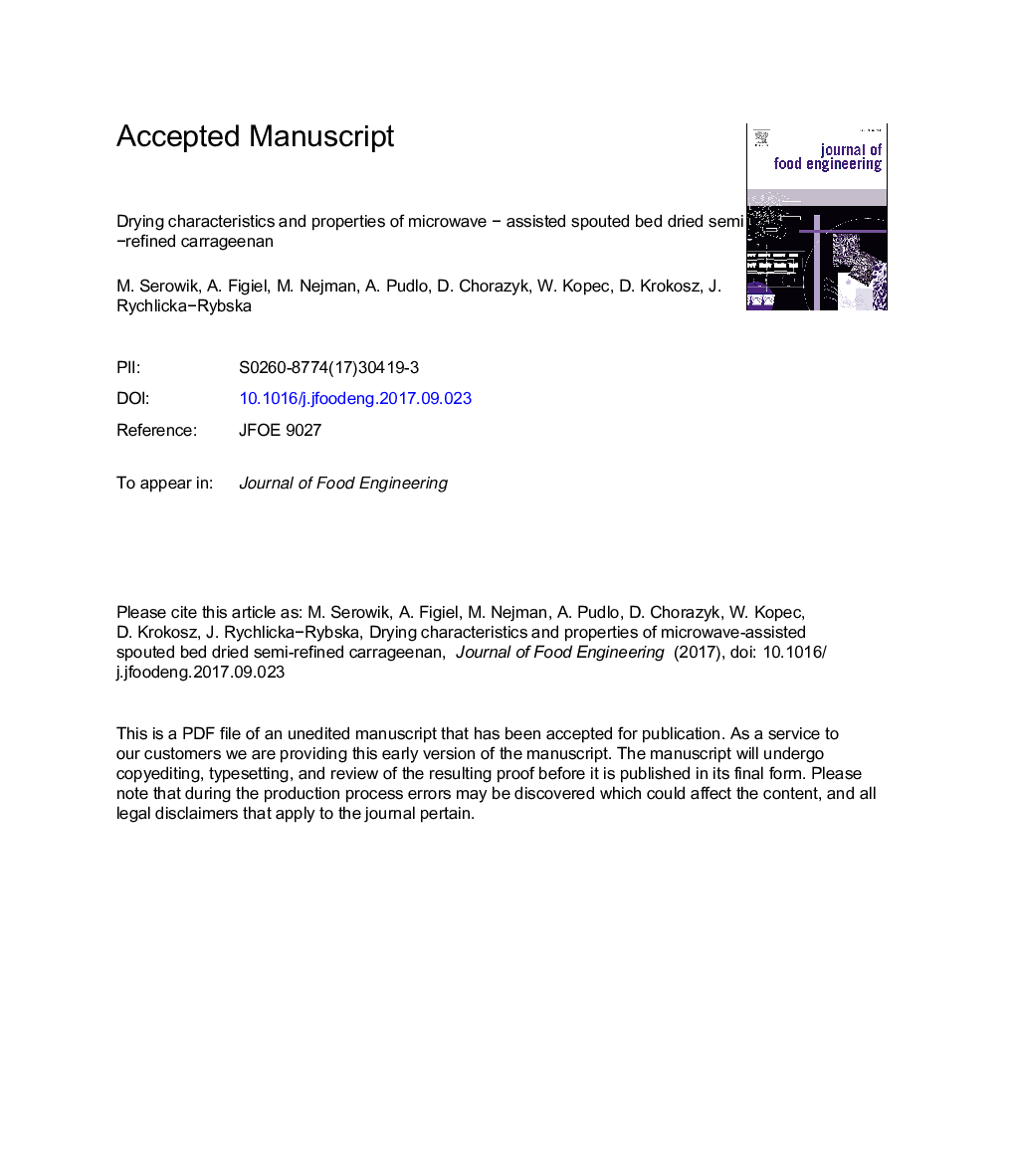| Article ID | Journal | Published Year | Pages | File Type |
|---|---|---|---|---|
| 6664800 | Journal of Food Engineering | 2018 | 42 Pages |
Abstract
The two carrageenan K12 and K73 gels were dried without microwave assistance (NM), microwave - assisted (M) and with microwave - assisted surface modification (the gels were covered with a dry hydrocolloid). The use of the microwave assistance method changed the kinetics of the spouted bed drying of two carrageenan gels K12 and K73, reducing the drying time and increasing the measured effective diffusion coefficient. The values of the Deff were additionally increased due to surface modification by coating the carrageenan samples with dry hydrocolloid powder prior to microwave - assisted spouted bed drying (MSBD). The Zingg classification was used to categorize the shape of both the fresh and dried carrageenan particles and to obtain Deff by providing equivalent diameter, which in the fresh state was higher for the K73 compared to K12 samples. The application of microwaves decreased the bulk density of the dried carrageenans but did not affect the infrared spectrum, solubility, or rheological characteristics of the powdered product. Based on these data, MSBD can be considered as an effective method for the production of carrageenan powders.
Keywords
Related Topics
Physical Sciences and Engineering
Chemical Engineering
Chemical Engineering (General)
Authors
M. Serowik, A. Figiel, M. Nejman, A. Pudlo, D. Chorazyk, W. Kopec, D. Krokosz, J. RychlickaâRybska,
